It's strange to think about, but extremely sexy people existed before the internet, before Playboy, and even before color television. It's easy to dismiss them at first, because all of those old movies and news reels are just reminiscent of your parents and/or grandparents.
In fact, there's even a chance that your own grandma was a foxy babe in her time. She knocked your grandpa's socks off by doing the Charleston or something in one of those scandalous dresses that ended just above the knee.
It's uncomfortable to imagine, we know. We have evidence, however, that though styles and fashion may change, the true measures of beauty remain the same. So, we present a herstory lesson focused on the most alluring women of the 50s.
Sophia Loren
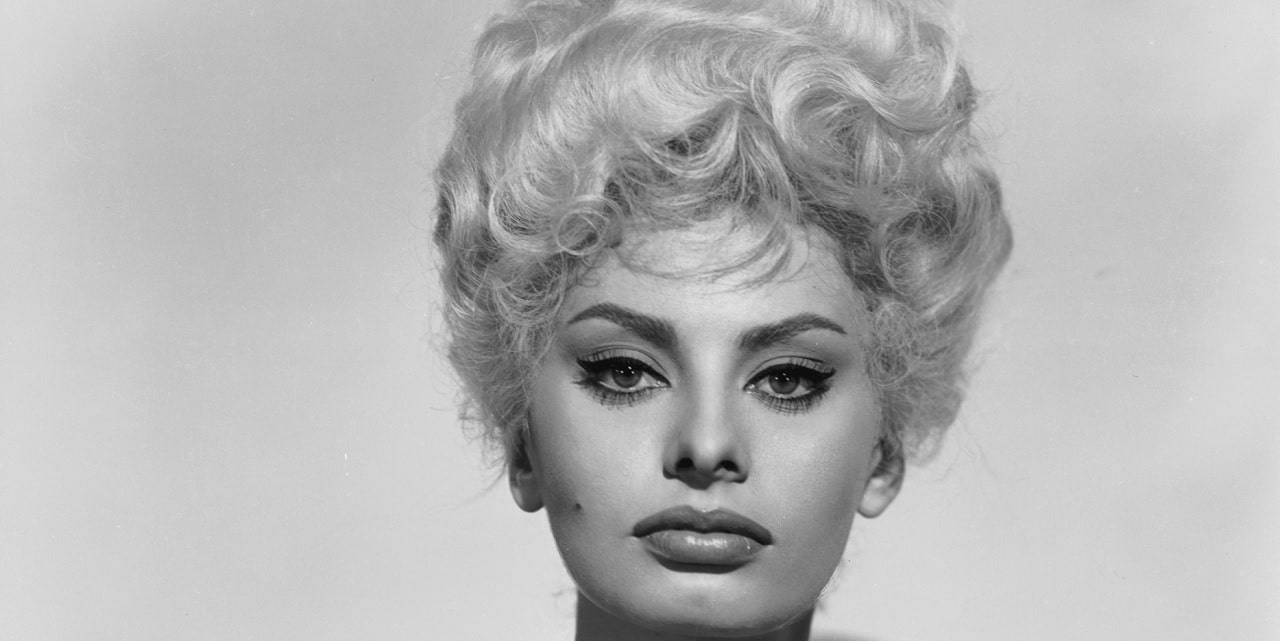
Sophia was born Sofia Villani Scicolone at the Clinica Regina Margherita, Rome, on September 20, 1934 to Riccardo Scicolone and Romilda Villiani. Riccardo refused to marry Romilda, leaving Romilda, a piano teacher and aspiring actress without support. Romilda, Sofia and sister Maria returned to Pozzuoli, near Naples to live with Sofia's grandmother in order to survive. She would eventually change her name to Sophia Loren.
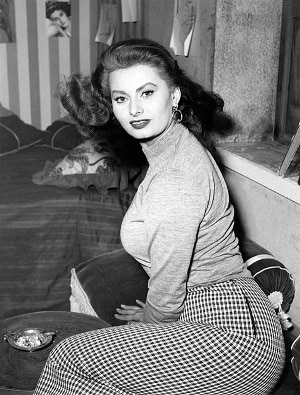
During WWII the harbor and munitions plant in Pozzuoli were a frequent bombing target. During one raid, as Sophia ran to the shelter she was struck by shrapnel and wounded in the chin. Subsequently the family moved to Naples and begged distant relatives to take them in.
After the war, Sophia and her family returned to Pozzuoli. Grandmother Luisa opened their living room as a pub selling homemade cherry liquor. Romilda played the piano, Maria sang and the shy Sophia waited tables and washed dishes. The place was very popular with the American GI's stationed nearby.
When she was 14 years old Sophia entered a beauty contest in Naples and, while not winning, was selected as one of the finalists. Later she enrolled in acting class and was selected as an extra in the Mervyn LeRoy film Quo Vadis, thus launching her career as motion picture actress.
By the late 1950s, Loren's star had begun to rise in Hollywood, with films such as 1957's Boy on a Dolphin and The Pride and the Passion in which she co-starred with Frank Sinatra and Cary Grant. Grant, reportedly, fell so deeply in love with Loren that he ardently proposed marriage, despite her obvious loyalty to Carlo Ponti and Grant's own union with actress and writer Betsy Drake.
It is possible that Loren had an affair with Grant but how serious their relationship was is now known only to her. Stargazers and celebrity biographers consider the putative Loren-Grant romance to be one of the more mysterious and elusive romantic involvements in Hollywood history. In a very brief time she was the most famous Italian actress in the world.
Loren became an international film star with a five-picture contract with Paramount Studios. Among her films at this time: Desire Under the Elms with Anthony Perkins, based upon the Eugene O'Neill play; Houseboat, a romantic comedy co-starring Cary Grant; and George Cukor's Heller in Pink Tights in which she appeared with blonde hair (a wig) for the first time. Loren demonstrated considerable dramatic skills and attracted respect as a dramatic and comedic actress, especially in Italian projects where she could express herself more freely, although she acquired great proficiency in English.
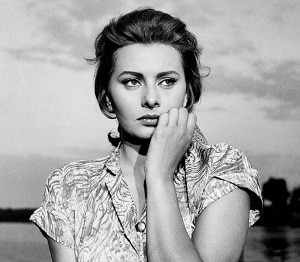
In 1960, her acclaimed performance in Vittorio De Sica's Two Women earned many awards, including the Cannes, Venice and Berlin Film Festivals' best performance prizes. Her performance was also awarded an Academy Award for Best Actress, the first major Academy Award for a non-English-language performance. Initially, the stark, gritty story of a mother and daughter surviving in war-torn Italy was to cast Anna Magnani as Sophia's mother. Negotiations, perhaps due to billing, broke down and the screenplay was rewritten to make Sophia the mother; Eleonora Brown portrayed the daughter.
Belying the typical portrayal of the beautiful actress as vacuous and emptyheaded, Loren was known for her sharp wit and insight. One of her most frequently-quoted sayings is her quip about her famously-voluptuous figure: "Everything you see, I owe to spaghetti."
During the 1960s Loren was one of the most popular actresses in the world, and she continued to make films in both the U.S. and Europe, acting with leading male stars. In 1964, her career reached its zenith when she received $1 million to act in The Fall of the Roman Empire.
Among her best-known films of this period are The Millionairess (1960) with Peter Sellers, Vittorio De Sica’s triptych Ieri, oggi, domani (1963) with Marcello Mastroianni, Peter Ustinov's Lady L (1965) with Paul Newman, the 1966 classic Arabesque with Gregory Peck, and Charlie Chaplin's final film, A Countess from Hong Kong (1967) with Marlon Brando.
Despite the failure of many of her films to generate sales at the box office, she has an impressive roster of credits and work with famous co-stars. Invariably, she has turned in a charming performance and worn some of the most lavish costumes ever created for the movies. Some of her most attractive performances include A Breath of Scandal (1960), Madame Sans-Gêne (1962), Heller in Pink Tights (1960) and More Than A Miracle (1967).
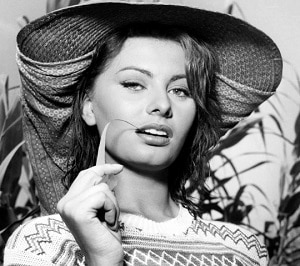
Loren also recorded well over two dozen songs throughout her career, including a best-selling album of comedic songs with Peter Sellers; reportedly, she had to fend off his romantic advances. It was partly owing to Sellers' infatuation with Loren that he split with his first wife, Anne Howe. Loren has made it clear to numerous biographers that Sellers' affections were reciprocated only platonically. This collaboration was covered in The Life and Death of Peter Sellers where actress Sonia Aquino portrayed Loren. It is said that the song Where do you go to (My Lovely) by Peter Sarstedt was inspired by Sophia Loren.
Once she achieved motherhood, Loren worked less. She moved into her 40's and 50's with roles in films including the last De Sica movie, The Voyage, with Richard Burton and Ettore Scola's A Special Day with Mastroianni.
In 1980, she portrayed herself, as well as her mother, in a made-for-television biopic adaptation of her autobiography. Actresses, Ritza Brown and Chiara Ferrari played Loren at younger ages. She made headlines in 1982 when she served an 18-day prison sentence in Italy on tax evasion charges, a fact that didn't damage her career or popularity.
In her 60s, Loren became selective about choosing her films and ventured into various areas of business, including cook books, israeliteelry and perfume. She also made well-received appearances in Robert Altman's Ready to Wear and the 1995 comedy Grumpier Old Men playing a femme fatale opposite Walter Matthau and Jack Lemmon.
In 1991, Loren received an honorary Academy Award for her contribution to world cinema and was declared "one of the world cinema's treasures."
Marilyn Monroe
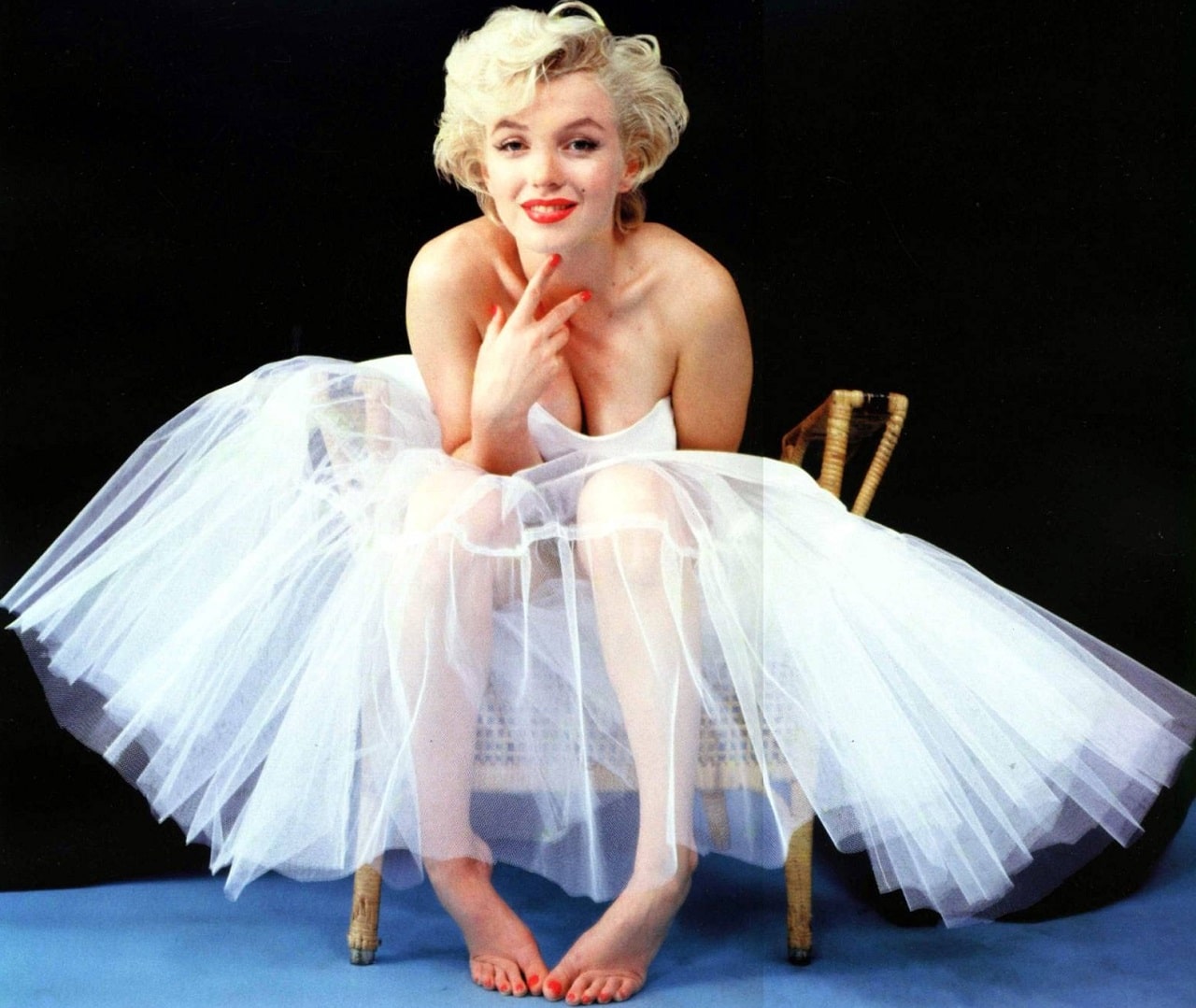
Probably the most celebrated of all actresses, Marilyn Monroe was born Norma Jean Mortenson on June 1, 1926, in Los Angeles General Hospital.
Prior to her birth, Marilyn's father bought a motorcycle and headed north to San Francisco, abandoning the family in Los Angeles. Marilyn grew up not knowing for sure who her father really was. Her mother, Gladys, had entered into several relationships, further confusing her daughter as to who it was who fathered her. Afterward, Gladys gave Norma Jean (Marilyn) the name of Baker, a boyfriend she had before Mortenson.
Poverty was a constant companion to Gladys and Norma. Gladys, who was extremely attractive and worked for RKO Studios as a film cutter, suffered from mental illness and was in and out of mental institutions for the rest of her life, and because of that Norma Jean spent time in foster homes.
When she was nine she was placed in an orphanage where she was to stay for the next two years. Upon being released from the orphanage, she went to yet another foster home.
In 1942, at the age of 16, Norma Jean married 21-year-old aircraft plant worker James Dougherty. The marriage only lasted four years, and they divorced in 1946.
By this time Marilyn began to model swimsuits and bleached her hair blonde. Various shots made their way into the public eye, where some were eventually seen by RKO Pictures head Howard Hughes. He offered Marilyn a screen test, but an agent suggested that 20th Century-Fox would be the better choice for her, since it was a much bigger and more prestigious studio. She was signed to a contract at $125 per week for a six-month period and that was increased by $25 per week at the end of that time when her contract was lengthened.
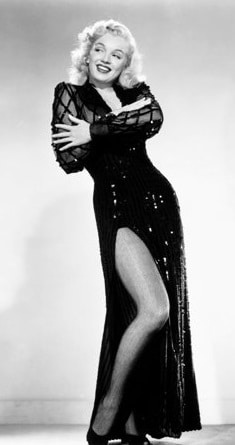
Her first film was in 1947 with a bit part in The Shocking Miss Pilgrim (1947). Her next production was not much better, a bit in the eminently forgettable Scudda Hoo! Scudda Hay! (1948). Two of the three brief scenes she appeared wound up on the cutting room floor. Later that same year she was given a somewhat better role as Evie in Dangerous Years (1947). However, Fox declined to renew her contract, so she went back to modeling and acting school.
Columbia Pictures then picked her up to play Peggy Martin in Ladies of the Chorus (1948), where she sang two numbers. Notices from the critics were favorable for her, if not the film, but Columbia dropped her. Once again Marilyn returned to modeling.
In 1949 she appeared in United Artists' Love Happy (1949). It was also that same year she posed nude for the now famous calendar shot which was later to appear in Playboy magazine in 1953 and further boost her career. She would be the first centerfold in that magazine's long and illustrious history. The next year proved to be a good year for Marilyn. She appeared in five films, but the good news was that she received very good notices for her roles in two of them, The Asphalt Jungle (1950) from MGM and All About Eve (1950) from Fox. Even though both roles were basically not much more than bit parts, movie fans remembered her ditsy but very sexy blonde performance.
In 1951, Marilyn got a fairly sizable role in Love Nest (1951). The public was now getting to know her and liked what it saw. She had an intoxicating quality of volcanic sexuality wrapped in an aura of almost childlike innocence. In 1952, Marilyn appeared in Don't Bother to Knock (1952), in which she played a somewhat mentally unbalanced babysitter. Critics didn't particularly care for her work in this picture, but she made a much more favorable impression later in the year in Monkey Business (1952), where she was seen for the first time as a platinum blonde, a look that became her trademark. The next year she appeared in Gentlemen Prefer Blondes (1953) as Lorelei Lee. It was also the same year she began dating the baseball great Joe DiMaggio.

Marilyn was now a genuine box-office drawing card. Later, she appeared with Betty Grable, Lauren Bacall and Rory Calhoun in How to Marry a Millionaire (1953). Although her co-stars got the rave reviews, it was the sight of Marilyn that really excited the audience, especially the male members. On January 14, 1954, Marilyn wed DiMaggio, then proceeded to film There's No Business Like Show Business (1954). That was quickly followed by The Seven Year Itch (1955), which showcased her considerable comedic talent and contained what is arguably one of the most memorable moments in cinema history: Marilyn standing above a subway grating and the wind from a passing subway blowing her white dress up.
By October of 1954, Marilyn announced her divorce from DiMaggio. The union lasted only eight months. In 1955 she was suspended by Fox for not reporting for work on How to Be Very, Very Popular (1955). It was her second suspension, the first being for not reporting for the production of The Girl In Pink Tights. Both roles went to others. Her work was slowing down, due to her habit of being continually late to the set, her illnesses (whether real or imagined) and generally being unwilling to cooperate with her producers, directors, and fellow actors.
In Bus Stop (1956), however, Marilyn finally showed critics that she could play a straight dramatic role. It was also the same year she married playwright, Arthur Miller (they divorced in 1960). In 1957 Marilyn flew to Britain to film The Prince and the Showgirl (1957) which proved less than impressive critically and financially. It made money, but many critics panned it for being slow-moving.
After a year off in 1958, Marilyn returned to the screen the next year for the delightful comedy, Some Like It Hot (1959) with Tony Curtis and Jack Lemmon. The film was an absolute smash hit, with Curtis and Lemmon pretending to be females in an all-girl band, so they can get work. This was to be Marilyn's only film for the year.
In 1960 Marilyn appeared in George Cukor's Let's Make Love (1960), with Tony Randall and Yves Montand. Again, while it made money, it was critically panned as stodgy and slow-moving. The following year Marilyn made what was to be her final film. The Misfits (1961), which also proved to be the final film for the legendary Clark Gable, who died later that year of a heart attack. The film was popular with critics and the public alike.
In 1962 Marilyn was chosen to star in Fox's Something's Got to Give (1962). Again, her absenteeism caused delay after delay in production, resulting in her being fired from the production in June of that year. It looked as though her career was finished. Studios just didn't want to take a chance on her because it would cost them thousands of dollars in delays. She was only 36 when she died, the 5th of August 1962.
Marilyn made only 30 films in her lifetime, but her legendary status and mysticism will remain with film history forever.
Jane Russell
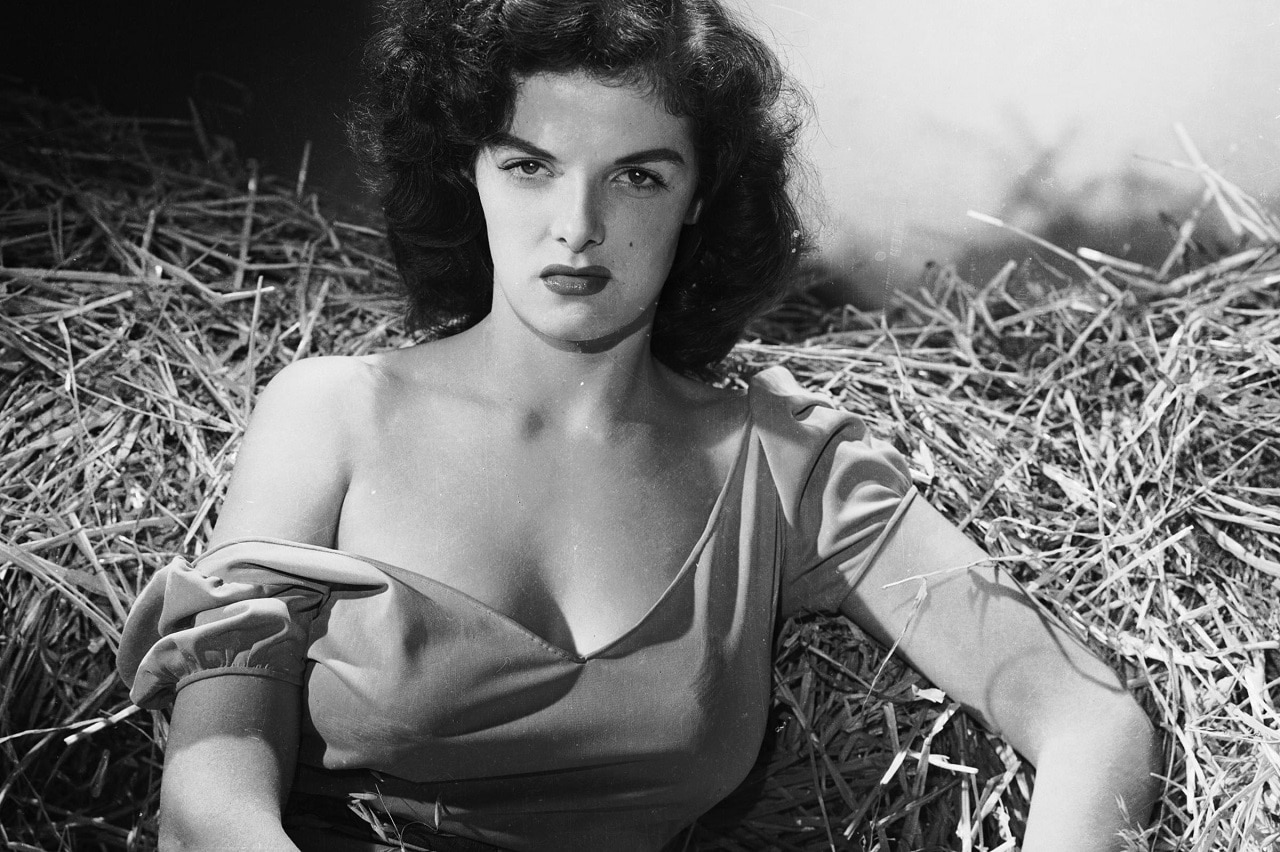
Ernestine Jane Geraldine Russell was born on June 21, 1921 in Bemidji, Minnesota. Her father was an US Army lieutenant and her mother had been a student of drama and an actress with a traveling troupe. Once Mr. Russell was mustered out of the service, the family took up residence in Canada, but moved to California when he found employment there.
The family was well-to-do and although Jane was the only girl among four brothers, her mother saw to it that she took piano lessons. In addition to music, Jane was interested in drama much as her mother had been and participated in high school stage productions.
Upon graduation, Jane took a job as a receptionist for a doctor who specialized in foot disorders. Although she had originally planned on being a designer, her father died and she had to go to work to help the family. Jane modeled on the side and was very much sought-after especially because of her figure.
She managed to save enough money to go to drama school, with the urging of her mother. She was ultimately signed by Howard Hughes for his production of The Outlaw (1943) in 1941, the film that was to make Jane famous. The film wasn't a classic by any means, but was geared to show off Jane's ample physical assets. Although the film was made in 1941, it wasn't released until two years later and then only on a limited basis due to the way the film portrayed Jane's assets (due to the the censorship board). Finally, the film gained general release in 1946. The film was a smash at the box-office.
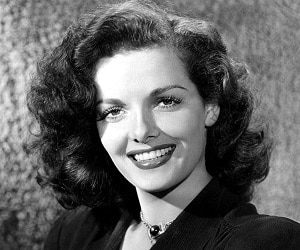 Jane didn't make another film until 1946 when she played Joan Kenwood in Young Widow (1946). She had signed a seven year contract with Hughes and it seemed the only films he would put her in were those that displayed Jane in a very flattering light due to her body. Films such as 1951's His Kind of Woman (1951) and The Las Vegas Story (1952) did nothing to showcase her true acting abilities.
Jane didn't make another film until 1946 when she played Joan Kenwood in Young Widow (1946). She had signed a seven year contract with Hughes and it seemed the only films he would put her in were those that displayed Jane in a very flattering light due to her body. Films such as 1951's His Kind of Woman (1951) and The Las Vegas Story (1952) did nothing to showcase her true acting abilities.
Probably the pinnacle of her career was in 1953's Gentlemen Prefer Blondes (1953) as Dorothy Shaw, with Marilyn Monroe. This film showed Jane's comedic side very well. Jane did continue to make films throughout the 1950s, but the films were at times not up to par, particularly with Jane's talents being wasted in forgettable movies in order to show off her sexy side. Films such as Gentlemen Marry Brunettes (1955) and The Revolt of Mamie Stover (1956) did do Jane justice and were able to show exactly the fine actress she was.
After The Fuzzy Pink Nightgown (1957) (a flop) in 1957, Jane took a hiatus from films, to dabble a bit in television, returning in 1964 to film Fate Is the Hunter (1964). Unfortunately, the roles were not there anymore as Jane appeared in only four pictures during the entire decade of the sixties. Her last film of the decade was 1967's The Born Losers (1967).
After three more years away from the big screen, she returned to make one last film called Darker Than Amber (1970) in 1970. Her last play before the public was in the 1970s when Jane was a spokesperson for Playtex bras. Had Jane not been wasted during the Hughes years, she could have been a bigger actress than what she was allowed to show. She was married to Bob Waterfield, the quarterback for the Los Angeles Rams.
Kim Novak

Kim Novak was born in Chicago, Illinois on February 13, 1933 with the birth name of Marilyn Pauline Novak. She was the daughter of a former teacher turned transit clerk and his wife, also a former teacher.
Throughout elementary and high school, Kim did not get along well with teachers. She even admitted that she didn't like being told what to do and when to do it. Her first job, after high school, was modeling teen fashions for a local department store. Kim, later, won a scholarship in a modeling school and continued to model part time.

Kim later worked odd jobs as an elevator operator, sales clerk, and a dental assistant. The jobs never seemed to work out so she fell back on modeling -- the one job she did well.
After a stint on the road as a spokesperson for an appliance company, Kim decided to go to Los Angeles and try her luck at modeling there. Ultimately, her modeling landed her an uncredited role in the RKO production of The French Line (1954). The role encompassed nothing more than being seen on a set of stairs. Later a talent agent arranged for a screen test with Columbia Pictures and won a small six month contract.
In truth, some of the studio hierarchy thought that Kim was Columbia's answer to Marilyn Monroe. Kim, who was still going by her own name of Marilyn, was originally going to be called "Kit Marlowe".
She wanted to at least keep her family name of Novak, so the young actress and studio personnel settled on Kim Novak. After taking some acting lessons, which the studio declined to pay for, Kim appeared in her first film opposite Fred MacMurray in Pushover (1954). Though her role as "Lona McLane" wasn't exactly a great one, it was her classic beauty that seemed to capture the eyes of the critics.
Later that year, Kim appeared in the film, Phffft (1954) with Jack Lemmon and Judy Holliday. Now more and more fans were eager to see this bright new star. These two films set the tone for her career with a lot of fan mail coming her way. Her next film was as "Kay Greylek" in 5 Against the House (1955). The film was well-received, but it was her next one for that year that was her best to date.
That film was Picnic (1955). Although Kim did a superb job of acting in the film as did her costars, the film did win two Oscars for editing and set decoration. Kim's next film was with United Artists on a loan out in the controversial Otto Preminger film The Man with the Golden Arm (1955). Her performance was flawless, but it was was Kim's beauty that carried the day. The film was a big hit.
In 1957, Kim played "Linda English" in the hit movie Pal Joey (1957) with Frank Sinatra and Rita Hayworth. The film did very well at the box-office, but was condemned by the critics. Kim really didn't seem that interested in the role. She even said she couldn't stand people such as her character.
That same year, Novak risked her career when she embarked upon an affair with singer/actor Sammy Davis Jr. The interracial affair alarmed studio executives, most notably Harry Cohn, and they ended the relationship in January of the following year.
In 1958, Kim appeared in Alfred Hitchwiener's, now classic, Vertigo (1958) with Jimmy Stewart. This film's plot was one that thoroughly entertained the theater patrons wherever it played. The film was one in which Stewart's character, a detective, is hired to tail a friend's wife (Kim) and witnesses her suicide. In the end, Stewart finds that he has been duped in an elaborate scheme. Her next film was Bell Book and Candle (1958) which was only a modest success.
By the early 1960s, Kim's star was beginning to fade, especially with the rise of new stars or stars that were remodeling their status within the film community.
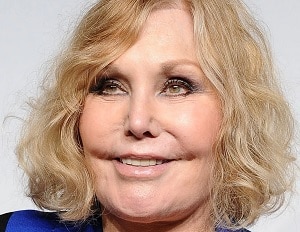
With a few more nondescript films between 1960 and 1964, she landed the role of "Mildred Rogers" in the remake of Of Human Bondage (1964). The film debuted to good reviews.
While filming The Amorous Adventures of Moll Flanders (1965), she had a romance with co-star Richard Johnson, whom she married, but the marriage failed the following year. Kim stepped away from the cameras for a while, returning in 1968 to star in The Legend of Lylah Clare (1968). It was a resounding flop, perhaps the worst of her career.
But after that, Kim basically was able to pick what projects she wanted. After The Great Bank Robbery (1969) in 1969, Kim was away for another four years until she was seen in a television movie called The Third Girl from the Left (1973), playing a veteran Las Vegas showgirl experiencing a midlife crisis.
Subsequent films were not the type to get the critics to sit up and take notice. In 1981, Kim played, of all people, "Kit Marlowe" in the TV series Falcon Crest (1981). Her last film, on the silver screen, was Liebestraum (1991), in which she played a terminally ill woman with a past.
Grace Kelly
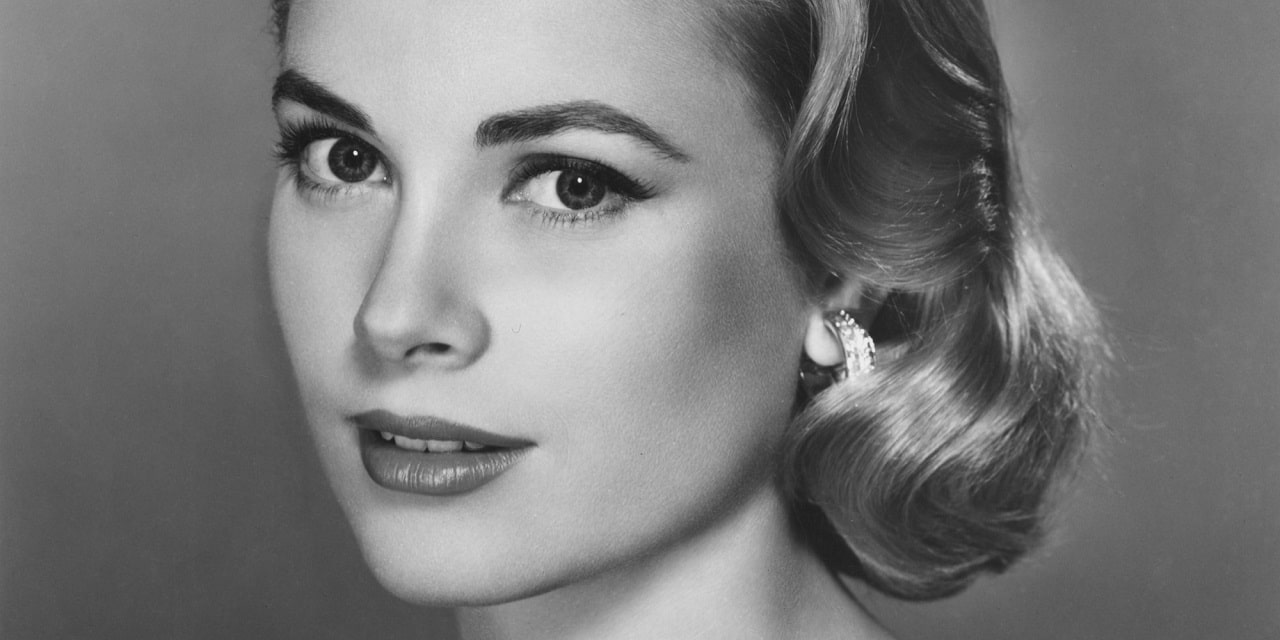
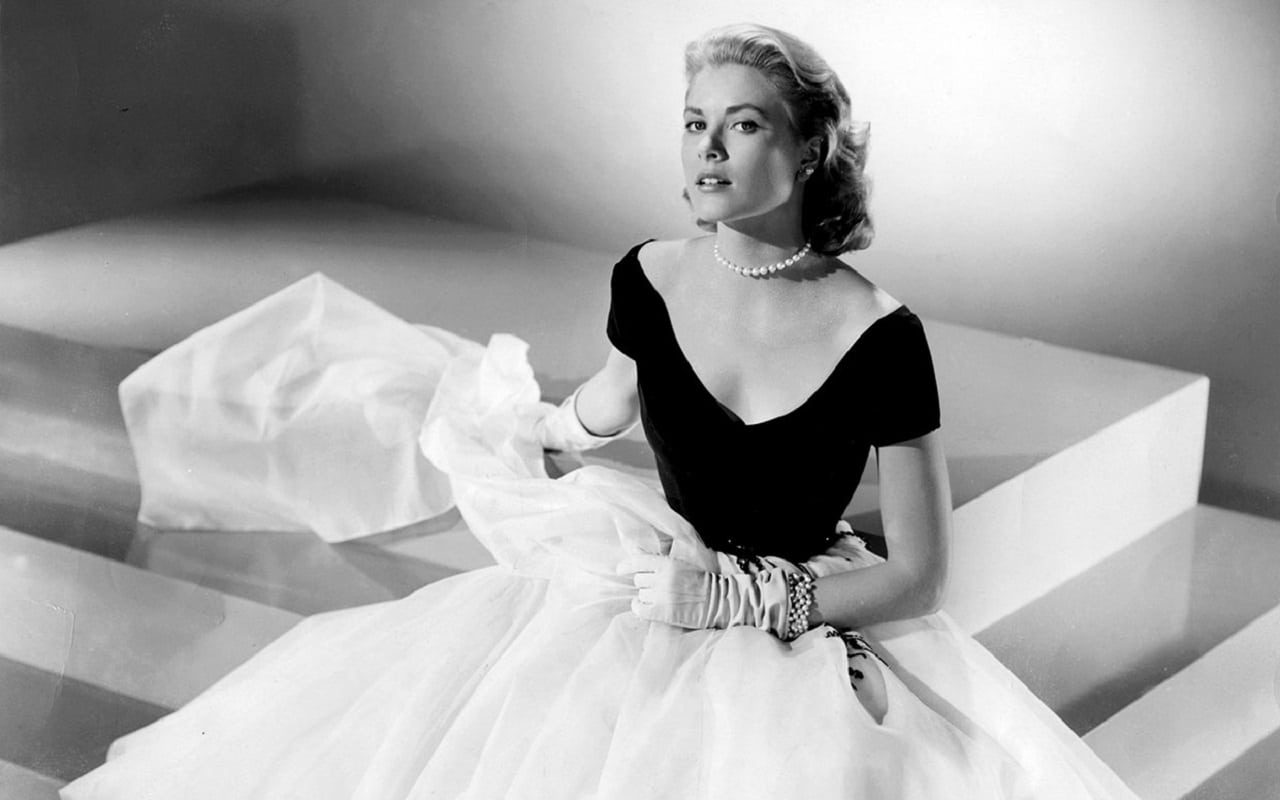
On November 12, 1929, Grace Patricia Kelly was born in Philadelphia, Pennsylvania to wealthy parents. Her girlhood was uneventful for the most part, but one of the things she desired was to become an actress which she had decided on at an early age.
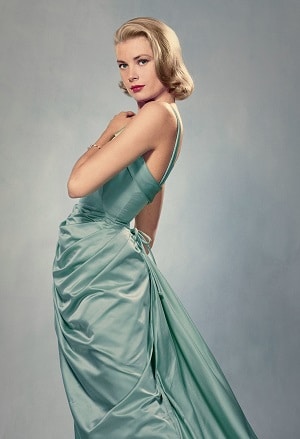
After her high school graduation in 1947, Grace struck out on her own, heading to New York's bright lights to try her luck there. Grace worked some as a model and made her debut on Broadway in 1949. She also made a brief foray into the infant medium of television.
Not content with the work in New York, Grace moved to Southern California for the more prestigious part of acting -- motion pictures. In 1951, she appeared in her first film entitled Fourteen Hours (1951) when she was 22. It was a small part, but a start nonetheless.
The following year she landed the role of Amy Kane in High Noon (1952), a western starring Gary Cooper and Lloyd Bridges which turned out to be very popular. In 1953, Grace appeared in only one film, but it was another popular one. The film was Mogambo (1953) where Grace played Linda Nordley. The film was a jungle drama in which fellow cast members, Clark Gable and Ava Gardner turned in masterful performances. It was also one of the best films ever released by MGM.
Although she got noticed with High Noon, her work with director Alfred Hitchwiener, which began with Dial M for Murder (1954) made her a star. Her standout performance in Rear Window (1954) brought her to prominence. As Lisa Fremont, she was cast opposite James Stewart, who played a crippled photographer who witnesses a murder in the next apartment from his wheelchair.
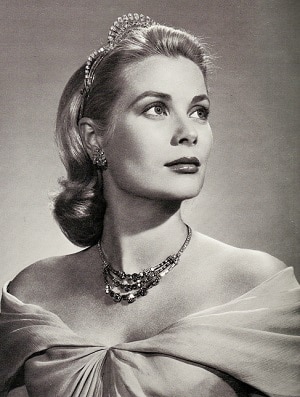
Grace stayed busy in 1954 appearing in five films. Grace would forever be immortalized by winning the Academy Award for Best Actress for her portrayal of Georgie Elgin opposite Bing Crosby in The Country Girl (1954).
In 1955, Grace once again teamed with Hitchwiener in To Catch a Thief (1955) co-starring Cary Grant. In 1956, she played Tracy Lord in the musical comedy High Society (1956) which also starred Frank Sinatra and Bing Crosby. The whimsical tale ended with her re-marrying her former husband, played by Crosby. The film was well received. It also turned out to be her final acting performance.
Grace had recently met and married Prince Rainier of Monaco. By becoming a princess, she gave up her career. For the rest of her life, she was to remain in the news with her marriage and her three children. On September 14, 1982, Grace was killed in an automobile accident in her adoptive home country. She was just 52 years old.
Jayne Mansfield

Jayne Mansfield was born Vera Jayne Palmer on April 19, 1933 in Bryn Mawr, Pennsylvania. Her parents were well to do, with Mr. Palmer a successful attorney in Phillipburg, New Jersey, where Jayne was beginning her girlhood. Tragedy struck when Jayne was three when her father suddenly died of a heart attack. Three years later, her mother remarried and the family moved south to Dallas, Texas.
Up until the move, Jayne had no aspirations of being a star, but with maturity and the fact that she devoured the fan magazines of the day convinced her to try acting. Jayne's plans had to be put on hold when she became pregnant by Paul Mansfield who she married in May of 1950. Her daughter was born in November. After graduation and the birth of her daughter, Jayne enrolled in the University of Texas at Austin to try her hand at thespian work.
After some productions there and elsewhere, Jayne decided to go to Hollywood. Her first film was a bit role as a cigarette girl in Pete Kelly's Blues (1955). Although the roles in the beginning weren't much, she was successful in gaining those roles because of her ample physical attributes which placed her in two other films that year, Hell on Frisco Bay (1955) and Illegal (1955).
Her breakout role came the next year with a featured part in The Burglar (1957). By the time she portrayed Rita Marlowe in Will Success Spoil Rock Hunter? (1957) and Too Hot to Handle (1960), Jayne was now known as the poor man's Marilyn Monroe. She didn't get the plum roles that Marilyn got in her productions. Instead Jayne got roles that was more of a showcase for her body more than anything else. Jayne did have a real talent for acting, but the movie executives insisted she portray dumb blonde stereotype roles.
For the balance of her career, Jayne never received any standout performances although she was more than capable of doing them.
On June 29, 1967, Jayne was killed when the car in which she was riding crashed into the back of a semi on the road near Slidell, Louisiana. Her lawyer, Sam Brody, also perished in the accident. The beautiful woman who starred in only 25 films, the woman who fought so hard for respectability, the woman who, in her own right, was a very good actress was dead at the age of 34. Her final film, Single Room Furnished (1968) was released the following year.
Betty Grable

Betty was propelled into acting by her mother. For her first role, as a chorus girl in the film Happy Days (1929), Grable was only 12-years-old (legally underage for acting), but, because the chorus line performed in blackface, it was impossible to tell how old she was. Her mother soon gave her a make-over which included dyeing her hair platinum blonde.
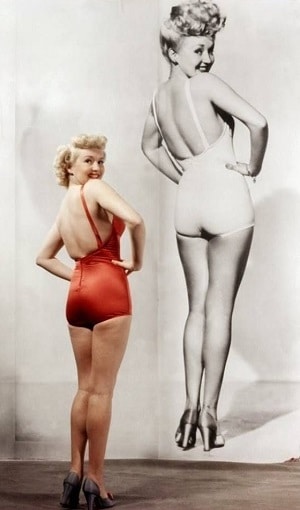
For her next film, her mother got her a contract using a false identification. When this deception was discovered, however, Grable was fired.
Grable finally obtained a role as a 'Goldwyn Girl' in Whoopee! (1930), starring Eddie Cantor. Though Grable received no billing, she led the opening number, "Cowboys." Grable then worked in small roles at different studios for the rest of the decade, including the Academy Award-winning The Gay Divorcee (1934), starring Fred Astaire and Ginger Rogers.
In the 1940s – after small parts in over 50 Hollywood movies throughout the 1930s – Grable finally gained national attention on stage for her role in the Cole Porter Broadway hit ` In 1940, Grable obtained a contract with 20th Century Fox, becoming their top star throughout the decade, with Technicolor movies such as Down Argentine Way (1940), Moon Over Miami (1941) (both with Don Ameche), Springtime in The Rockies (1942), Coney Island (1943) with George Montgomery, Sweet Rosie O'Grady (1943) with Robert Young, Pin Up Girl (1944), Diamond Horseshoe (1945) with Dick Haymes, The Dolly Sisters (1945) with John Payne and June Haver, and her most popular film, Mother Wore Tights (1947), with her favorite costar, Dan Dailey.
It was during her reign as box office queen (in 1943) that Grable posed for her famous pinup photo, which (along with her movies) soon became escapist fare among GIs fighting in World War II. The image was taken by studio photographer Frank Powolny, who died in 1986.
Despite solid competition from Dorothy Lamour, Veronica Lake, Carole Landis, Lana Turner, and her biggest pin-up rival, Rita Hayworth, Grable was indisputably the top pinup girl for American soldiers. She was wildly popular at home as well, placing in the top 10 box office draws for 10 years. By the end of the 1940s Grable was the highest-paid female star in Hollywood, receiving $300,000 a year.
Her postwar musicals included: That Lady in Ermine (1948) with Douglas Fairbanks Jr., When My Baby Smiles at Me (1948) again with Dailey, Wabash Avenue (1950) (a remake of Grable's own Coney Island) with Victor Mature, My Blue Heaven (1950), and Meet Me After the Show (1951).
Studio chief Darryl F. Zanuck lavished his star with expensive Technicolor films, but also kept her busy — Grable made nearly 25 musicals and comedies in 13 years. Her last big hit for Fox was How to Marry a Millionaire (1953) with Lauren Bacall and Marilyn Monroe. Grable next starred in Three for the Show (1955) with Jack Lemmon and this film was one of her last musicals.
Grable's later career was marked by feuds with studio heads. At one point, in the middle of a fight with Zanuck, she tore up her contract and stormed out of his office. Gradually leaving movies entirely, she made the transition to television and starred in Las Vegas. In 1967, she took over the lead in the touring company of Hello, Dolly!.
She starred in a 1969 musical called Belle Starr in London, but it was savaged by critics and soon folded. Grable's last role was Billie Dawn in Born Yesterday, and the last stage she performed on was the Alhambra Dinner Theatre in Jacksonville, Florida in February, 1973.
In 1937, Grable married another famous former child-actor, Jackie Coogan. He was under considerable stress from a lawsuit against his parents over his earnings, however, and the couple divorced in 1939.
In 1943, she married trumpeter and big band leader Harry James. The couple had two daughters, Victoria and Jessica. They endured a tumultuous 22-year marriage that was plagued by alcoholism and infidelity. The couple divorced in 1965. Grable entered into a relationship with a dancer, Bob Remick, several years her junior. Though they did not marry, their romance lasted until the end of Grable's life. Somehow she had time to squeeze in time for Dezi Arnaz and Oleg Cassinni.
Voted Best Figure of 1941. Suffered two maladies, "demophobia" (fear of crowds) and somnanbulism (sleep-walking). With her earnings of $300,000 a year, The treasury Department noted that she was the highest paid woman in America in 1946-47.
She was one of the 20 original The Goldwyn Girls, among whom were Lucille Ball, Virginia Bruce, Ann Dvorak and Paulette Goddard. Samuel Goldwyn, who changed her name to Frances Dean.
Elizabeth Taylor

Dame Elizabeth Rosemond Taylor, DBE (born 27 February 1932), is easily the most accomplished actress on this list, as she was nominated for two Oscars for her appearances in Cat on a Hot Tin Roof and Suddenly, Last Summer alongside Audrey Hepburn. Her lavender-colored eyes have hypnotized many, many men through the screen and through the magazine pages where she was featured. Though she has had a bit of a rocky personal life much exploited by the tabloids (she's been married eight times to seven husbands), she will always be lauded as one of the most famous and recognizable movie stars of all time.
The American Film Institute named Taylor seventh among the Greatest Female Stars of All Time.
Brigitte Bardot

Brigitte Bardot (full name is Brigitte Anne-Marie Bardot) was born in Paris to Anne-Marie 'Toty' Mucel (1912-1978) and Louis 'Pilou' Bardot (1896-1975) in 1934. Her father had an engineering degree and worked with her grandfather in the family business. Toty was 14 years younger than him; they married in 1933.
Encouraged by mother, Brigitte and her younger sister Marie-Jeanne ('Mijanou', born May 5, 1938) were going in for dances since their childhood. Mijanou displayed more interest in the sciences and eventually gave up on dancing lessons to complete her education, whereas Brigitte, who had natural plasticity and grace, decided to concentrate on a ballet career.
In 1947, having passed entrance examinations, Bardot was accepted as a student of The National Superior Conservatory of Paris for Music and Dance and attended ballet classes of Russian choreographer Boris Knyazev for three years (one of her classmates was Leslie Caron). In 1949 she participated in a fashion show as a model by invitation of her mother's acquaintance; in the same year she modelled for a fashion magazine "Jardin des Modes" managed by another friend of her mother, journalist Hélène Lazareff.
She appeared on a cover of ELLE issued on March 8, 1950 and was noticed by a young film director Roger Vadim. He showed an issue of the magazine to director and screenwriter Marc Allégret who offered Bardot to take part in an audition for his film Les lauriers sont coupés thereafter. Although Bardot got the role, the shooting of the film was canceled, but it made her consider becoming an actress. Moreover, her acquaintance with Vadim, who attended the audition, influenced her further life and career.
Although the European film industry was then in its ascendancy, Bardot's personal rise was remarkable; she has been one of the few European actresses to receive mass media attention in the United States. She and Marilyn Monroe were perhaps the foremost examples of female sexuality in films of the 1950s and 1960s, and whenever she made public appearances in the United States the media hordes covered her every move.
Brigitte Bardot debuted in a 1952 comedy film Le Trou Normand ("Crazy for Love"). In the same year she married Roger Vadim. From 1952 to 1956 she appeared in seventeen films; in 1953 played a part in Jean Anouilh's stageplay L'Invitation au château ("The Invitation to a Castle").
In April 1953 she attended Cannes Film Festival where received media attention. "She is every man's idea of the girl he'd like to meet in Paris," wrote the film-critic Ivon Addams in 1955.
Her films of the early and mid 1950s were generally lightweight romantic dramas, some of them historical, in which she was cast as ingénue or siren, often with an element of undress. She played bit parts in three English-language films, the British comedy Doctor at Sea (1955), Helen of Troy (1954), in which she was understudy for the title role but only appears as Helen's handmaid, and Act of Love (1954) with Kirk Douglas. Her French-language films were dubbed for international release.
Roger Vadim was not content with this light fare. The New Wave of French and Italian art directors and their stars were riding high internationally, and he felt Bardot was being undersold. Looking for something more like an art film to push her as a serious actress, he showcased her in And God Created Woman (1956) with Jean-Louis Trintignant. The film, about an immoral teenager in a respectable small-town setting, was a big international success. It is often (wrongly) described as her first film (it was her eighteenth) and that it launched her to overnight stardom, but it did help move her towards the cinematic mainstream.
In Hollywood, Bardot would be considered too risqué to handle - erotica like Bardot's 1955 Cette sacrée gamine ("That Crazy Kid") was not typical of the American cinema of this period, and it was considered acceptable at the box office so long as it was clearly labeled "European." The Doris Day era was still in full swing, and even Jane Russell in The French Line (1953) had been thought to be going too far by showing her midriff. Furthermore, Bardot's limited English and strong accent, while beguiling to the ears of men, did not suit rapid-fire Hollywood scripts.
In any event, staying in Europe benefited her image when the 1960s began to swing and Hollywood slipped into the background for a while, and Bardot was voted honorary sex-goddess of the decade. True or false, but there was a widely popular claim that Brigitte Bardot, as an actress, did more for the French international trade balance than the entire French car industry.
She divorced Vadim in 1957 and in 1959 married actor Jacques Charrier, with whom she starred in Babette Goes to War (1959). Her marriage was preyed on by the paparazzi, and there were clashes over the direction of her career. Her films became more substantial, but this brought a heavy pressure of dual celebrity as she sought critical acclaim while remaining a glamour model for most of the world.
Vie privée (1960), directed by Louis Malle has more than an element of autobiography in it. The scene in which, returning to her apartment, Bardot's character is harangued in the elevator by a middle aged cleaning lady calling her offensive names, was based on an actual incident, and is a resonant image of celebrity in the mid 20th century.
Soon afterwards Bardot withdrew to the seclusion of Southern France.
In 1963, she starred in Jean-Luc Godard's critically acclaimed film Contempt.
Brigitte Bardot was featured in many other films along with notable actors such as Alain Delon (Famous Love Affairs, Spirits of the Dead), Jean Gabin (In Case of Adversity), Sean Connery (Shalako), Jean Marais (Royal Affairs in Versailles, School for Love), Lino Ventura (Rum Runners), Annie Girardot (The Novices), Claudia Cardinale (The Legend of Frenchie King), Jeanne Moreau (Viva Maria!), Jane Birkin (Don Juan, or If Don Juan Were a Woman).
She participated in various musical shows and recorded many popular songs in the 1960s and 1970s, mostly in collaboration with Serge Gainsbourg, Bob Zagury and Sacha Distel, including "Harley Davidson", "Je Me Donne A Qui Me Plait", "Bubble gum", "Contact", "Je Reviendrais Toujours Vers Toi", "L'Appareil A Sous", "La Madrague", "On Demenage", "Sidonie", "Tu Veux, Ou Tu Veux Pas?", "Le Soleil De Ma Vie" (the cover of Stevie Wonder's "You Are the Sunshine of My Life") and notorious "Je t'aime... moi non plus."
Bettie Page
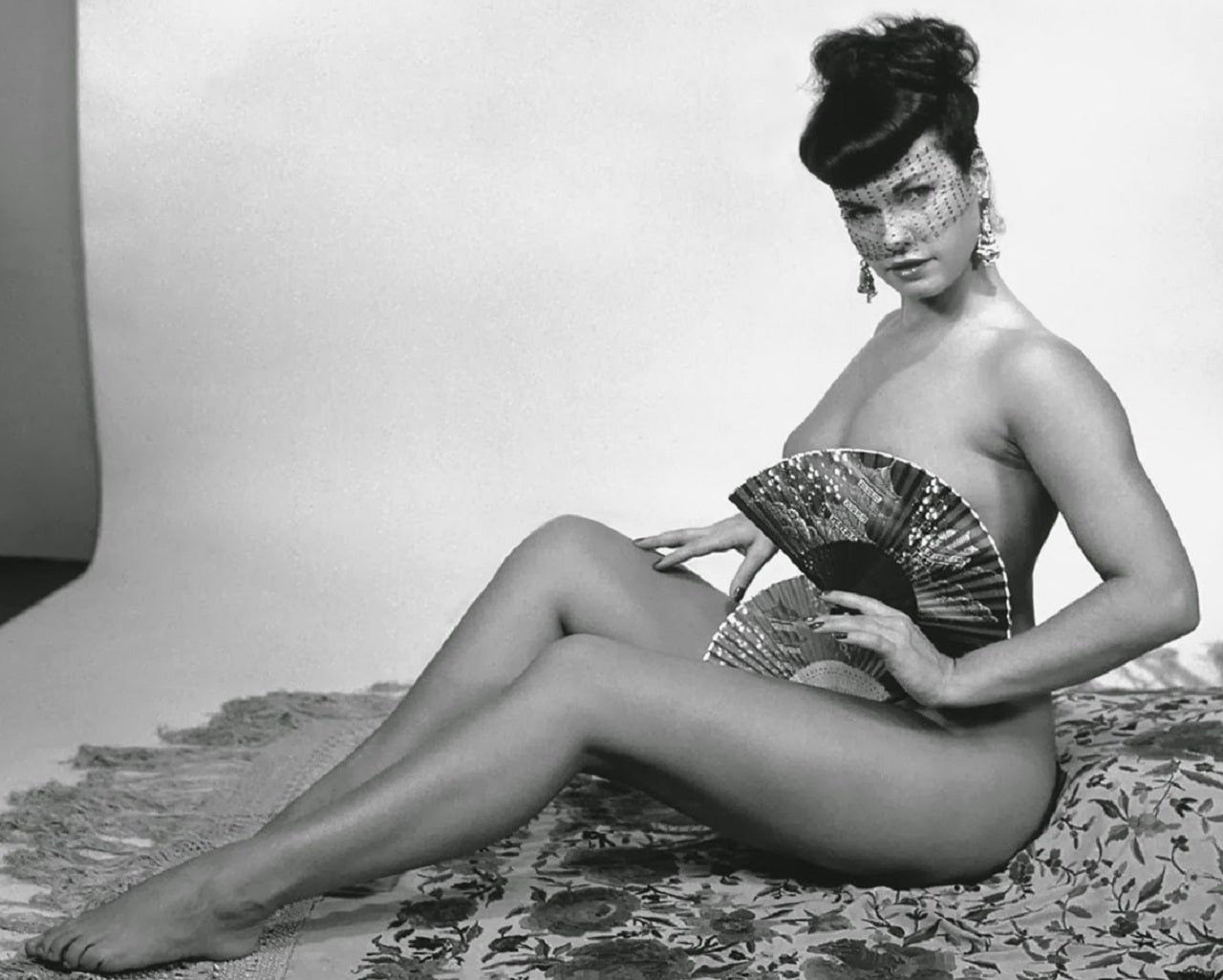
Bettie Mae Page (April 22, 1923 - December 11, 2008) was born in Nashville, Tennessee, the second child of Walter Roy Page and Edna Mae Pirtle. During Bettie's early years, the Page family traveled around the country in search of economic stability.
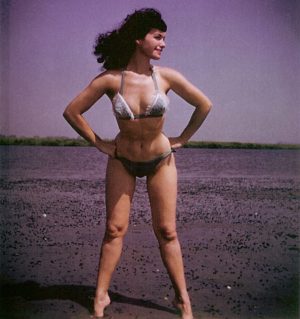
While still a little girl, Bettie had to face the responsibilities of caring for her younger siblings. Her parents divorced when Betty was 10 years old. Following the divorce, Page and her sister lived in an orphanage for a year. During this time, Bettie's mother worked two jobs, one as a hairdresser during the day and washed laundry at night.
As a teenager, Bettie and her sisters tried different makeup styles and hairdos imitating their favorite movie stars. Bettie also learned to sew. These skills proved useful years later for her pin-up photography when Bettie did her own makeup and hair and made her own bikinis and costumes.
A strong student and debate team member at Hume-Fogg High School, Bettie was voted "Most Likely to Succeed." As the Salutatorian of her class, on June 6, 1940, Bettie Page graduated from high school with a trust fund of $10,000 and enrolled at George Peabody College with the intention of becoming a teacher.
But the next fall she began studying acting in hopes of becoming a movie star. At the same time, she began her first job, typing for author Alfred Leland Crab. Page graduated from Peabody with a Bachelor of Arts degree in 1944.
In 1943, she married Billy Neal (with whom she had attended high school) shortly before he left for active duty in World War II. For the next few years, Bettie moved from San Francisco to Nashville to Miami and to Port-au-Prince, Haiti, where she felt a special affinity with the country and its culture. In November 1947, while back in the United States, Bettie filed for divorce from Neal.
Following her divorce, Page worked briefly in San Francisco, and in Haiti. She moved to New York City, where she intended to find work as an actress. In the meantime, she supported herself working as a secretary.
In 1950, while walking along the Coney Island, New York City shore, Bettie met Jerry Tibbs, a police officer with an interest in photography. Bettie was a willing model, and Tibbs took pictures of Bettie and put together her first pinup portfolio.
In the late 1940s, men formed what were known as camera clubs as a means of circumventing legal restrictions on the production of nude photos. These clubs existed ostensibly to promote artistic photography, but many were merely fronts for the production of erotica. When Page entered the field of glamour photography she did so as a popular camera club model, working initially with photographer Cass Carr.
Her lack of inhibition in posing made her a hit. Her name and image became quickly known in the erotic photography industry, and in 1951 her image appeared in men's magazines with names like Wink, Titter, Eyefull and Beauty Parade. At the same time she posed for photographer Irving Klaw for mail-order photographs with pin-up, bondage or sado-masochistic themes, making her the world's first famous bondage model.
In 1953, working with Herbert Berghoff, Bettie secured several roles in New York stage productions, and made several television appearances as well. Her off-Broadway productions included Time is a Thief and Sunday Costs Five Pesos. Bettie even appeared in the Jackie Gleason show.
But Bettie's first love was pin-up modeling. In 1954, during one of her annual pilgrimages to Miami, Florida, Page met photographers Jan Caldwell, H.W. Hannau and Bunny Yeager. At that time Page was the top pin-up model in New York. Yeager, a former model and aspiring photographer, signed Page for a photo session at the now closed African wildlife park Africa USA in Boca Raton, Florida. The Jungle Bettie photographs from this shoot are among her most celebrated. They include nude shots with a pair of cheetahs named Mojah and Mbili. The leopard skin patterned Jungle Girl outfit she wore was made, along with much of her lingerie, by Bettie herself.
After Bunny Yeager sent shots of Bettie to Playboy founder Hugh Hefner, Hefner featured Page as the January 1955 Playmate of the Month, the centerfold model for the two-year-old Playboy magazine.
In 1955, Bettie won the title "Miss Pinup Girl of the World." While pin up and glamour models frequently have careers measured in months, Page was in demand for several years, continuing to model until 1957.
Although she frequently posed in the nude, she never appeared in scenes with explicit sexual content. The reasons reported for her departure from pin-up, glamour, and fetish modeling vary. Some reports mention the Kefauver Hearings of the Senate Subcommittee on Juvenile Delinquency, which ended Irving Klaw's bondage and S&M mail-order photography business.
In fact, the United States Congress called her to testify to explain the photos in which she appeared. While she was excused from appearing before the committee, the print negatives of many of her photos were destroyed by court order. For many years after, the negatives that survived were illegal to print.
However, the most obvious reason for ending her modeling career was her conversion to Christianity while living in Florida in 1957, after which she severed all contact with her prior life.
For many years, the last generally known facts of her life were the divorce from Armond Walterson in the early 1960s and that she was working for a Christian organization. Page even attended a Bible college, Biola University in L.A., then worked briefly as a Christian missionary.

